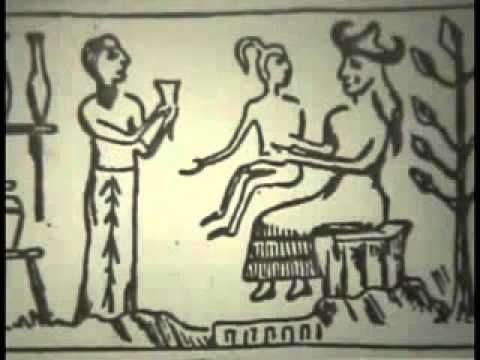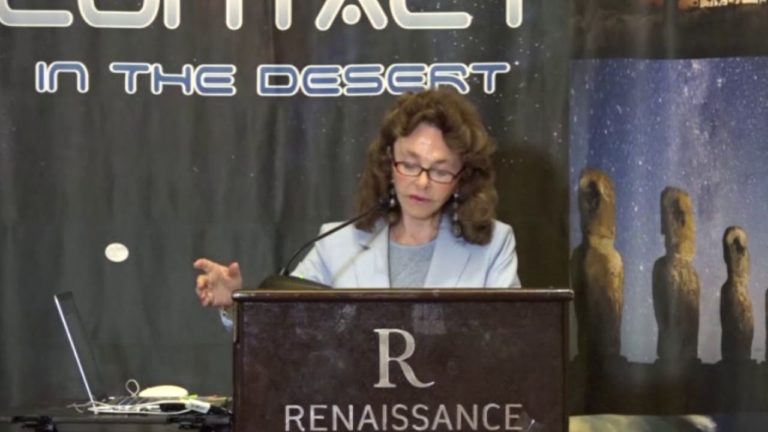
What is the Paranormal?
From Wikipedia

Paranormal events are purported phenomena described in popular culture, folk, and other non-scientific bodies of knowledge, whose existence within these contexts is described as beyond normal experience or scientific explanation.
Proposals regarding the paranormal are different from scientific hypotheses or speculations extrapolated from scientific evidence because scientific ideas are grounded in empirical observations and experimental data gained through the scientific method. In contrast, those who argue for the existence of the paranormal explicitly do not base their arguments on empirical evidence but rather on anecdote, testimony, and suspicion. Notable paranormal beliefs include those that pertain to telepathy, extrasensory perception, spiritualism and the pseudosciences of ghost hunting, cryptozoology, and ufology.
Introdution
Paranormal events are purported phenomena described in popular culture, folk, and other non-scientific bodies of knowledge, whose existence within these contexts is described as beyond normal experience or scientific explanation.
Proposals regarding the paranormal are different from scientific hypotheses or speculations extrapolated from scientific evidence because scientific ideas are grounded in empirical observations and experimental data gained through the scientific method. In contrast, those who argue for the existence of the paranormal explicitly do not base their arguments on empirical evidence but rather on anecdote, testimony, and suspicion. Notable paranormal beliefs include those that pertain to telepathy, extrasensory perception, spiritualism and the pseudosciences of ghost hunting, cryptozoology, and ufology.
Etymology
The term “paranormal” has existed in the English language since at least 1920. The word consists of two parts: para and normal. The definition implies that the scientific explanation of the world around us is ‘normal’ and anything that is above, beyond, or contrary to that is ‘para’.
Paranormal subjects
 On the classification of paranormal subjects, Terence Hines in his book Pseudoscience and the Paranormal (2003) wrote:“ The paranormal can best be thought of as a subset of pseudoscience.
On the classification of paranormal subjects, Terence Hines in his book Pseudoscience and the Paranormal (2003) wrote:“ The paranormal can best be thought of as a subset of pseudoscience.
What sets the paranormal apart from other pseudosciences is a reliance on explanations for alleged phenomena that are well outside the bounds of established science. Thus, paranormal phenomena include extrasensory perception (ESP), telekinesis, ghosts, poltergeists, life after death, reincarnation, faith healing, human auras, and so forth. The explanations for these allied phenomena are phrased in vague terms of “psychic forces”, “human energy fields”, and so on. This is in contrast to many pseudoscientific explanations for other nonparanormal phenomena, which, although very bad science, are still couched in acceptable scientific terms.
Ghost hunting
In traditional ghostlore and fiction featuring ghosts, a ghost is a manifestation of the spirit or soul of a person. Alternative theories expand on that idea and include belief in the ghosts of deceased animals. Sometimes the term “ghost” is used synonymously with any spirit or demon, however in popular usage the term typically refers to a deceased person’s spirit.
 The belief in ghosts as souls of the departed is closely tied to the concept of animism, an ancient belief which attributed souls to everything in nature. As the 19th-century anthropologist George Frazer explained in his classic work, The Golden Bough (1890), souls were seen as the creature within that animated the body. Although the human soul was sometimes symbolically or literally depicted in ancient cultures as a bird or other animal, it was widely held that the soul was an exact reproduction of the body in every feature, even down to clothing the person wore. This is depicted in artwork from various ancient cultures, including such works as the ancient Egyptian Book of the Dead (ca. (1550 BCE), which shows deceased people in the afterlife appearing much as they did before death, including the style of dress.
The belief in ghosts as souls of the departed is closely tied to the concept of animism, an ancient belief which attributed souls to everything in nature. As the 19th-century anthropologist George Frazer explained in his classic work, The Golden Bough (1890), souls were seen as the creature within that animated the body. Although the human soul was sometimes symbolically or literally depicted in ancient cultures as a bird or other animal, it was widely held that the soul was an exact reproduction of the body in every feature, even down to clothing the person wore. This is depicted in artwork from various ancient cultures, including such works as the ancient Egyptian Book of the Dead (ca. (1550 BCE), which shows deceased people in the afterlife appearing much as they did before death, including the style of dress.
Although the evidence for ghosts is largely anecdotal, the belief in ghosts throughout history has remained widespread and persistent.
Ufology
The possibility of extraterrestrial life is not, by itself, a paranormal subject. Many scientists are actively engaged in the search for unicellular life within the solar system, carrying out studies on the surface of Mars and examining meteors that have fallen to Earth. Projects such as SETI are conducting an astronomical search for radio activity that would show evidence of intelligent life outside the solar system. Scientific theories of how life developed on Earth allow for the possibility that life developed on other planets as well. The paranormal aspect of extraterrestrial life centers largely around the belief in unidentified flying objects and the phenomena said to be associated with them.
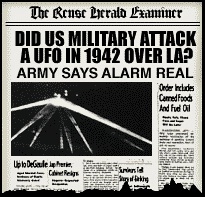 Early in the history of UFO culture, believers divided themselves into two camps. The first held a rather conservative view of the phenomena, interpreting them as unexplained occurrences that merited serious study. They began calling themselves “ufologists” in the 1950s and felt that logical analysis of sighting reports would validate the notion of extraterrestrial visitation.
Early in the history of UFO culture, believers divided themselves into two camps. The first held a rather conservative view of the phenomena, interpreting them as unexplained occurrences that merited serious study. They began calling themselves “ufologists” in the 1950s and felt that logical analysis of sighting reports would validate the notion of extraterrestrial visitation.
The second camp consisted of individuals who coupled ideas of extraterrestrial visitation with beliefs from existing quasi-religious movements. These individuals typically were enthusiasts of occultism and the paranormal. Many had backgrounds as active Theosophists, Spiritualists, or were followers of other esoteric doctrines. In contemporary times, many of these beliefs have coalesced into New Age spiritual movements.
Both secular and spiritual believers describe UFOs as having abilities beyond what are considered possible according to known aerodynamic constraints and physical laws. The transitory events surrounding many UFO sightings also limits the opportunity for repeat testing required by the scientific method. Acceptance of UFO theories by the larger scientific community is further hindered by the many possible hoaxes associated with UFO culture.
Cryptozoology
Cryptozoology is a pseudoscience and subculture that aims to prove the existence of entities from the folklore record, such as Bigfoot, chupacabras, or Mokele-mbembe. Cryptozoologists refer to these entities as cryptids, a term coined by the subculture.
Paranormal Research
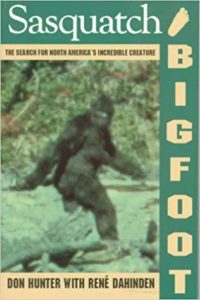 Approaching the paranormal from a research perspective is often difficult because of the lack of acceptable physical evidence from most of the purported phenomena. By definition, the paranormal does not conform to conventional expectations of nature. Therefore, a phenomenon cannot be confirmed as paranormal using the scientific method because, if it could be, it would no longer fit the definition. (However, confirmation would result in the phenomenon being reclassified as part of science.) Despite this problem, studies on the paranormal are periodically conducted by researchers from various disciplines. Some researchers simply study the beliefs in the paranormal regardless of whether the phenomena are considered to objectively exist. This section deals with various approaches to the paranormal: anecdotal, experimental, and participant-observer approaches and the skeptical investigation approach.
Approaching the paranormal from a research perspective is often difficult because of the lack of acceptable physical evidence from most of the purported phenomena. By definition, the paranormal does not conform to conventional expectations of nature. Therefore, a phenomenon cannot be confirmed as paranormal using the scientific method because, if it could be, it would no longer fit the definition. (However, confirmation would result in the phenomenon being reclassified as part of science.) Despite this problem, studies on the paranormal are periodically conducted by researchers from various disciplines. Some researchers simply study the beliefs in the paranormal regardless of whether the phenomena are considered to objectively exist. This section deals with various approaches to the paranormal: anecdotal, experimental, and participant-observer approaches and the skeptical investigation approach.
Anecdotal Approach
An anecdotal approach to the paranormal involves the collection of stories told about the paranormal. Charles Fort (1874–1932) is perhaps the best-known collector of paranormal anecdotes. Fort is said to have compiled as many as 40,000 notes on unexplained paranormal experiences, though there was no doubt many more. These notes came from what he called “the orthodox conventionality of Science”, which were odd events originally reported in magazines and newspapers such as The Times and scientific journals such as Scientific American, Nature and Science. From this research Fort wrote seven books, though only four survive: The Book of the Damned (1919), New Lands (1923), Lo! (1931) and Wild Talents (1932); one book was written between New Lands and Lo!, but it was abandoned and absorbed into Lo!
 Reported events that he collected include teleportation (a term Fort is generally credited with coining); poltergeist events; falls of frogs, fishes, and inorganic materials of an amazing range; crop circles; unaccountable noises and explosions; spontaneous fires; levitation; ball lightning (a term explicitly used by Fort); unidentified flying objects; mysterious appearances and disappearances; giant wheels of light in the oceans; and animals found outside their normal ranges (see phantom cat). He offered many reports of OOPArts, the abbreviation for “out of place” artefacts: strange items found in unlikely locations. He is perhaps the first person to explain strange human appearances and disappearances by the hypothesis of alien abduction and was an early proponent of the extraterrestrial hypothesis. Fort is considered by many as the father of modern paranormalism, which is the study of the paranormal.
Reported events that he collected include teleportation (a term Fort is generally credited with coining); poltergeist events; falls of frogs, fishes, and inorganic materials of an amazing range; crop circles; unaccountable noises and explosions; spontaneous fires; levitation; ball lightning (a term explicitly used by Fort); unidentified flying objects; mysterious appearances and disappearances; giant wheels of light in the oceans; and animals found outside their normal ranges (see phantom cat). He offered many reports of OOPArts, the abbreviation for “out of place” artefacts: strange items found in unlikely locations. He is perhaps the first person to explain strange human appearances and disappearances by the hypothesis of alien abduction and was an early proponent of the extraterrestrial hypothesis. Fort is considered by many as the father of modern paranormalism, which is the study of the paranormal.
The magazine Fortean Times continues Charles Fort’s approach, regularly reporting anecdotal accounts of the paranormal.
Such anecdotal collections, lacking the reproducibility of empirical evidence, are not amenable to scientific investigation. The anecdotal approach is not a scientific approach to the paranormal because it leaves verification dependent on the credibility of the party presenting the evidence. Nevertheless, it is a common approach to investigating paranormal phenomena.
Parapsychology
Participant of a Ganzfeld experiment which proponents say may show evidence of telepathy.
Experimental investigation of the paranormal has been conducted by parapsychologists. J. B. Rhine popularized the now famous methodology of using card-guessing and dice-rolling experiments in a laboratory in the hopes of finding evidence of extrasensory perception. However, it was revealed that Rhine’s experiments contained methodological flaws and procedural errors.
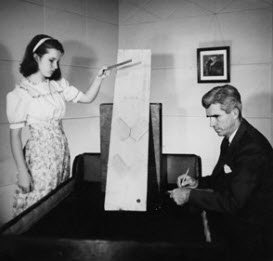 In 1957, the Parapsychological Association was formed as the preeminent society for parapsychologists. In 1969, they became affiliated with the American Association for the Advancement of Science. Criticisms of the field were focused in the founding of the Committee for the Scientific Investigation of Claims of the Paranormal (1976), now called the Committee for Skeptical Inquiry, and its periodical, Skeptical Inquirer. Eventually, more mainstream scientists became critical of parapsychology as an endeavor, and statements by the National Academies of Science and the National Science Foundation cast a pall on the claims of evidence for parapsychology. Today, many cite parapsychology as an example of a pseudoscience. Parapsychology has been criticized for continuing investigation despite being unable to provide convincing evidence for the existence of any psychic phenomena after more than a century of research.
In 1957, the Parapsychological Association was formed as the preeminent society for parapsychologists. In 1969, they became affiliated with the American Association for the Advancement of Science. Criticisms of the field were focused in the founding of the Committee for the Scientific Investigation of Claims of the Paranormal (1976), now called the Committee for Skeptical Inquiry, and its periodical, Skeptical Inquirer. Eventually, more mainstream scientists became critical of parapsychology as an endeavor, and statements by the National Academies of Science and the National Science Foundation cast a pall on the claims of evidence for parapsychology. Today, many cite parapsychology as an example of a pseudoscience. Parapsychology has been criticized for continuing investigation despite being unable to provide convincing evidence for the existence of any psychic phenomena after more than a century of research.
By the 2000s, the status of paranormal research in the United States had greatly declined from its height in the 1970s, with the majority of work being privately funded and only a small amount of research being carried out in university laboratories. In 2007, Britain had a number of privately funded laboratories in university psychology departments. Publication remained limited to a small number of niche journals and to date there have been no experimental results that have gained wide acceptance in the scientific community as valid evidence of the paranormal.
Participant-observer approach
A ghost hunter taking an EMF reading (Electro Magnetic Field), which proponents claim may be connected to paranormal activity. While parapsychologists look for quantitative evidence of the paranormal in laboratories, a great number of people immerse themselves in qualitative research through participant-observer approaches to the paranormal. Participant-observer methodologies have overlaps with other essentially qualitative approaches as well, including phenomenological research that seeks largely to describe subjects as they are experienced, rather than to explain them.
 Participant-observation suggests that by immersing oneself in the subject being studied, a researcher is presumed to gain understanding of the subject. Criticisms of participant-observation as a data-gathering technique are similar to criticisms of other approaches to the paranormal, but also include an increased threat to the objectivity of the researcher, unsystematic gathering of data, reliance on subjective measurement, and possible observer effects (observation may distort the observed behavior). Specific data gathering methods, such as recording EMF readings at haunted locations have their own criticisms beyond those attributed to the participant-observation approach itself.
Participant-observation suggests that by immersing oneself in the subject being studied, a researcher is presumed to gain understanding of the subject. Criticisms of participant-observation as a data-gathering technique are similar to criticisms of other approaches to the paranormal, but also include an increased threat to the objectivity of the researcher, unsystematic gathering of data, reliance on subjective measurement, and possible observer effects (observation may distort the observed behavior). Specific data gathering methods, such as recording EMF readings at haunted locations have their own criticisms beyond those attributed to the participant-observation approach itself.
The participant-observer approach to the paranormal has gained increased visibility and popularity through reality television programs like Ghost Hunters, and the formation of independent ghost hunting groups that advocate immersive research at alleged paranormal locations. One popular website for ghost hunting enthusiasts lists over 300 of these organizations throughout the United States and the United Kingdom.
Skeptical scientific investigation
James Randi is a well-known investigator of paranormal claims.
Scientific skeptics advocate critical investigation of claims of paranormal phenomena: applying the scientific method to reach a rational, scientific explanation of the phenomena to account for the paranormal claims, taking into account that alleged paranormal abilities and occurrences are sometimes hoaxes or misinterpretations of natural phenomena. A way of summarizing this method is by the application of Occam’s razor, which suggests that the simpler solution is usually the correct one. The standard scientific models give the explanation that what appears to be paranormal phenomena is usually a misinterpretation, misunderstanding, or anomalous variation of natural phenomena, rather than an actual paranormal phenomenon.
The Committee for Skeptical Inquiry, formerly the Committee for the Scientific Investigation of Claims of the Paranormal (CSICOP), is an organization that aims to publicize the scientific, skeptical approach. It carries out investigations aimed at understanding paranormal reports in terms of scientific understanding, and publishes its results in its journal, the Skeptical Inquirer.
 Richard Wiseman, of The Committee for Skeptical Inquiry, draws attention to possible alternative explanations for perceived paranormal activity in his article, The Haunted Brain. While he recognizes that approximately 15% of people believe they have experienced an encounter with a ghost, he reports that only 1% report seeing a full-fledged ghost while the rest report strange sensory stimuli, such as seeing fleeting shadows or wisps of smoke, or the sensation of hearing footsteps or feeling a presence. Wiseman makes the claim that, rather than experiencing paranormal activity, it is activity within our own brains that creates these strange sensations.
Richard Wiseman, of The Committee for Skeptical Inquiry, draws attention to possible alternative explanations for perceived paranormal activity in his article, The Haunted Brain. While he recognizes that approximately 15% of people believe they have experienced an encounter with a ghost, he reports that only 1% report seeing a full-fledged ghost while the rest report strange sensory stimuli, such as seeing fleeting shadows or wisps of smoke, or the sensation of hearing footsteps or feeling a presence. Wiseman makes the claim that, rather than experiencing paranormal activity, it is activity within our own brains that creates these strange sensations.
Michael Persinger proposed that ghostly experiences could be explained by stimulating the brain with weak magnetic fields. Swedish psychologist Pehr Granqvist and his team, attempting to replicate Persinger’s research, determined that the paranormal sensations experienced by Persinger’s subjects were merely the result of suggestion, and that brain stimulation with magnetic fields did not result in ghostly experiences.
Oxford University Justin Barrett has theorized that “agency” — being able to figure out why people do what they do — is so important in everyday life, that it is natural for our brains to work too hard at it, thereby detecting human or ghost-like behaviour in everyday meaningless stimuli.
James Randi, an investigator with a background in illusion, feels that the simplest explanation for those claiming paranormal abilities is often trickery, illustrated by demonstrating that the spoon bending abilities of psychic Uri Geller can easily be duplicated by trained stage magicians. He is also the founder of the James Randi Educational Foundation and its million dollar challenge that offered a prize of US $1,000,000 to anyone who could demonstrate evidence of any paranormal, supernatural or occult power or event, under test conditions agreed to by both parties. Despite many declarations of supernatural ability, the prize was never claimed.
Psychology
 In anomalistic psychology, paranormal phenomena have naturalistic explanations resulting from psychological and physical factors which have sometimes given the impression of paranormal activity to some people, in fact, where there have been none. The psychologist David Marks wrote that paranormal phenomena can be explained by magical thinking, mental imagery, subjective validation, coincidence, hidden causes, and fraud. According to studies some people tend to hold paranormal beliefs because they possess psychological traits that make them more likely to misattribute paranormal causation to normal experiences. Research has also discovered that cognitive bias is a factor underlying paranormal belief.
In anomalistic psychology, paranormal phenomena have naturalistic explanations resulting from psychological and physical factors which have sometimes given the impression of paranormal activity to some people, in fact, where there have been none. The psychologist David Marks wrote that paranormal phenomena can be explained by magical thinking, mental imagery, subjective validation, coincidence, hidden causes, and fraud. According to studies some people tend to hold paranormal beliefs because they possess psychological traits that make them more likely to misattribute paranormal causation to normal experiences. Research has also discovered that cognitive bias is a factor underlying paranormal belief.
Chris French founder of the Anomalistic Psychology Research Unit.
Many studies have found a link between personality and psychopathology variables correlating with paranormal belief. Some studies have also shown that fantasy proneness correlates positively with paranormal belief.
Bainbridge (1978) and Wuthnow (1976) found that the most susceptible people to paranormal belief are those who are poorly educated, unemployed or have roles that rank low among social values. The alienation of these people due to their status in society is said to encourage them to appeal to paranormal or magical beliefs.
 Research has associated paranormal belief with low cognitive ability, low IQ and a lack of science education. Intelligent and highly educated participants involved in surveys have proven to have less paranormal belief. Tobacyk (1984) and Messer and Griggs (1989) discovered that college students with better grades have less belief in the paranormal.
Research has associated paranormal belief with low cognitive ability, low IQ and a lack of science education. Intelligent and highly educated participants involved in surveys have proven to have less paranormal belief. Tobacyk (1984) and Messer and Griggs (1989) discovered that college students with better grades have less belief in the paranormal.
In a case study (Gow, 2004) involving 167 participants the findings revealed that psychological absorption and dissociation were higher for believers in the paranormal. Another study involving 100 students had revealed a positive correlation between paranormal belief and proneness to dissociation. A study (Williams et al. 2007) discovered that “neuroticism is fundamental to individual differences in paranormal belief, while paranormal belief is independent of extraversion and psychoticism”. A correlation has been found between paranormal belief and irrational thinking.
In an experiment Wierzbicki (1985) reported a significant correlation between paranormal belief and the number of errors made on a syllogistic reasoning task, suggesting that believers in the paranormal have lower cognitive ability. A relationship between narcissistic personality and paranormal belief was discovered in a study involving the Australian Sheep-Goat Scale.
 De Boer and Bierman wrote: “ In his article ‘Creative or Defective’ Radin (2005) asserts that many academics explain the belief in the paranormal by using one of the three following hypotheses: Ignorance, deprivation or deficiency. ‘The ignorance hypothesis asserts that people believe in the paranormal because they’re uneducated or stupid. The deprivation hypothesis proposes that these beliefs exist to provide a way to cope in the face of psychological uncertainties and physical stressors. The deficiency hypothesis asserts that such beliefs arise because people are mentally defective in some way, ranging from low intelligence or poor critical thinking ability to a full-blown psychosis’ (Radin). The deficiency hypothesis gets some support from the fact that the belief in the paranormal is an aspect of a schizotypical personality (Pizzagalli, Lehman and Brugger, 2001).”
De Boer and Bierman wrote: “ In his article ‘Creative or Defective’ Radin (2005) asserts that many academics explain the belief in the paranormal by using one of the three following hypotheses: Ignorance, deprivation or deficiency. ‘The ignorance hypothesis asserts that people believe in the paranormal because they’re uneducated or stupid. The deprivation hypothesis proposes that these beliefs exist to provide a way to cope in the face of psychological uncertainties and physical stressors. The deficiency hypothesis asserts that such beliefs arise because people are mentally defective in some way, ranging from low intelligence or poor critical thinking ability to a full-blown psychosis’ (Radin). The deficiency hypothesis gets some support from the fact that the belief in the paranormal is an aspect of a schizotypical personality (Pizzagalli, Lehman and Brugger, 2001).”
A psychological study involving 174 members of the Society for Psychical Research completed a delusional ideation questionnaire and a deductive reasoning task. As predicted, the study showed that “individuals who reported a strong belief in the paranormal made more errors and displayed more delusional ideation than skeptical individuals”. There was also a reasoning bias which was limited to people who reported a belief in, rather than experience of, paranormal phenomena. The results suggested that reasoning abnormalities may have a causal role in the formation of paranormal belief.
Research has shown that people reporting contact with aliens have higher levels of absorption, dissociativity, fantasy proneness and tendency to hallucinate.
Findings have shown in specific cases that paranormal belief acts as a psychodynamic coping function and serves as a mechanism for coping with stress. Survivors from childhood sexual abuse, violent and unsettled home environments have reported to have higher levels of paranormal belief. A study of a random sample of 502 adults revealed paranormal experiences were common in the population which were linked to a history of childhood trauma and dissociative symptoms. Research has also suggested that people who perceive themselves as having little control over their lives may develop paranormal beliefs to help provide an enhanced sense of control.
 Gender differences in surveys on paranormal belief have reported women scoring higher than men overall and men having greater belief in UFOs and extraterrestrials. Surveys have also investigated the relationship between ethnicity and paranormal belief. In a sample of American university students (Tobacyk et al. 1988) it was found that people of African descent have a higher level of belief in superstitions and witchcraft while belief in extraterrestrial life forms was stronger among people of European descent. Otis and Kuo (1984) surveyed Singapore university students and found Chinese, Indian and Malay students to differ in their paranormal beliefs, with the Chinese students showing greater skepticism.
Gender differences in surveys on paranormal belief have reported women scoring higher than men overall and men having greater belief in UFOs and extraterrestrials. Surveys have also investigated the relationship between ethnicity and paranormal belief. In a sample of American university students (Tobacyk et al. 1988) it was found that people of African descent have a higher level of belief in superstitions and witchcraft while belief in extraterrestrial life forms was stronger among people of European descent. Otis and Kuo (1984) surveyed Singapore university students and found Chinese, Indian and Malay students to differ in their paranormal beliefs, with the Chinese students showing greater skepticism.
According to American surveys analysed by (Bader et al. 2011) African Americans have the highest belief in the paranormal and while the findings are not uniform the “general trend is for whites to show lesser belief in most paranormal subjects”.
Polls show that about fifty percent of the United States population believe in the paranormal. Robert L. Park says a lot of people believe in it because they “want it to be so”.
A 2013 study that utilized a biological motion perception task discovered a “relation between illusory pattern perception and supernatural and paranormal beliefs and suggest that paranormal beliefs are strongly related to agency detection biases”. A 2014 study discovered that schizophrenic patients have more belief in psi than healthy adults.
Neuroscience
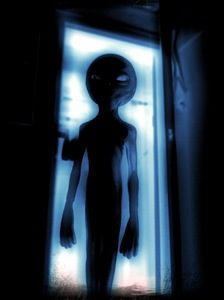 Some scientists have investigated possible neurocognitive processes underlying the formation of paranormal beliefs. In a study (Pizzagalli et al. 2000) data demonstrated that “subjects differing in their declared belief in and experience with paranormal phenomena as well as in their schizotypal ideation, as determined by a standardized instrument, displayed differential brain electric activity during resting periods.” Another study (Schulter and Papousek, 2008) wrote that paranormal belief can be explained by patterns of functional hemispheric asymmetry that may be related to perturbations during fetal development.
Some scientists have investigated possible neurocognitive processes underlying the formation of paranormal beliefs. In a study (Pizzagalli et al. 2000) data demonstrated that “subjects differing in their declared belief in and experience with paranormal phenomena as well as in their schizotypal ideation, as determined by a standardized instrument, displayed differential brain electric activity during resting periods.” Another study (Schulter and Papousek, 2008) wrote that paranormal belief can be explained by patterns of functional hemispheric asymmetry that may be related to perturbations during fetal development.
It was also realized that people with higher dopamine levels have the ability to find patterns and meanings where there aren’t any. This is why scientists have connected high dopamine levels with paranormal belief.
Criticism
Some scientists have criticized the media for promoting paranormal claims. In a report (Singer and Benassi, 1981) wrote that the media may account for much of the near universality of paranormal belief as 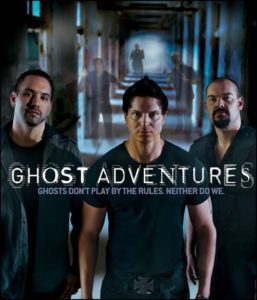 the public are constantly exposed to films, newspapers, documentaries and books endorsing paranormal claims while critical coverage is largely absent. According to Paul Kurtz “In regard to the many talk shows that constantly deal with paranormal topics, the skeptical viewpoint is rarely heard; and when it is permitted to be expressed, it is usually sandbagged by the host or other guests.” Kurtz described the popularity of public belief in the paranormal as a “quasi-religious phenomenon”, a manifestation of a transcendental temptation, a tendency for people to seek a transcendental reality that cannot be known by using the methods of science. Kurtz compared this to a primitive form of magical thinking.
the public are constantly exposed to films, newspapers, documentaries and books endorsing paranormal claims while critical coverage is largely absent. According to Paul Kurtz “In regard to the many talk shows that constantly deal with paranormal topics, the skeptical viewpoint is rarely heard; and when it is permitted to be expressed, it is usually sandbagged by the host or other guests.” Kurtz described the popularity of public belief in the paranormal as a “quasi-religious phenomenon”, a manifestation of a transcendental temptation, a tendency for people to seek a transcendental reality that cannot be known by using the methods of science. Kurtz compared this to a primitive form of magical thinking.
Terence Hines has written that on a personal level, paranormal claims could be considered a form of consumer fraud as people are “being induced through false claims to spend their money—often large sums—on paranormal claims that do not deliver what they promise” and uncritical acceptance of paranormal belief systems can be damaging to society… .
Belief polls
While the validity of the existence of paranormal phenomena is controversial and debated passionately by both proponents of the paranormal and by skeptics, surveys are useful in determining the beliefs of people in regards to paranormal phenomena. These opinions, while not constituting scientific evidence for or against, may give an indication of the mindset of a certain portion of the population (at least among those who answered the polls). The number of people worldwide who believe in parapsychological powers has been estimated to be 3 to 4 billion.
 A survey conducted in 2006 by researchers from Australia’s Monash University sought to determine what types of phenomena that people claim to have experienced and the effects these experiences have had on their lives. The study was conducted as an online survey with over 2,000 respondents from around the world participating. The results revealed that around 70% of the respondents believe to have had an unexplained paranormal event that changed their life, mostly in a positive way. About 70% also claimed to have seen, heard, or been touched by an animal or person that they knew was not there; 80% have reported having a premonition, and almost 50% stated they recalled a previous life.
A survey conducted in 2006 by researchers from Australia’s Monash University sought to determine what types of phenomena that people claim to have experienced and the effects these experiences have had on their lives. The study was conducted as an online survey with over 2,000 respondents from around the world participating. The results revealed that around 70% of the respondents believe to have had an unexplained paranormal event that changed their life, mostly in a positive way. About 70% also claimed to have seen, heard, or been touched by an animal or person that they knew was not there; 80% have reported having a premonition, and almost 50% stated they recalled a previous life.
Polls were conducted by Bryan Farha at Oklahoma City University and Gary Steward of the University of Central Oklahoma in 2006. They found fairly consistent results compared to the results of a Gallup poll in 2001.
More About The Paranormal
Features
Copyright © 2018 SEAN-O-VISTA

Powered with 

